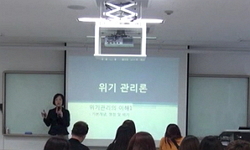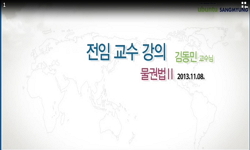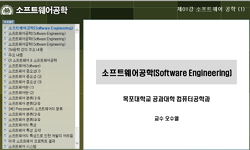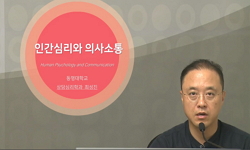현대 사회에서 조직체들은 수많은 위기들과 마주하고 있다. 그러한 위기들 중 기업 CEO의 도덕적 잘못으로 인한 위기는 최근 가장 빈번히 일어나고 있는 위기들 중 하나이다. 지금까지 위기...
http://chineseinput.net/에서 pinyin(병음)방식으로 중국어를 변환할 수 있습니다.
변환된 중국어를 복사하여 사용하시면 됩니다.
- 中文 을 입력하시려면 zhongwen을 입력하시고 space를누르시면됩니다.
- 北京 을 입력하시려면 beijing을 입력하시고 space를 누르시면 됩니다.
https://www.riss.kr/link?id=T11385183
- 저자
-
발행사항
서울 : 연세대학교 대학원, 2008
- 학위논문사항
-
발행연도
2008
-
작성언어
한국어
-
주제어
위기관리 ; 사과 ; 애착관계성 ; 공중의 수용 ; crisis management ; apology ; attachment relationship ; public's acceptance
-
발행국(도시)
서울
-
기타서명
In the crisis of the corporate CEO's moral fault, the types of apology messages and the level of public's acceptance evaluation
-
형태사항
vii, 102 p. : 삽도 ; 26 cm
-
일반주기명
지도교수: 한정호
- 소장기관
-
0
상세조회 -
0
다운로드
부가정보
국문 초록 (Abstract)
현대 사회에서 조직체들은 수많은 위기들과 마주하고 있다. 그러한 위기들 중 기업 CEO의 도덕적 잘못으로 인한 위기는 최근 가장 빈번히 일어나고 있는 위기들 중 하나이다. 지금까지 위기관리에 관한 많은 연구들이 있었지만, 기업 CEO의 도덕적인 잘못으로 인한 위기 상황에서 기업이 어떠한 위기관리 전략과 전술을 택해야 공중을 호의적으로 설득시킬 수 있는지에 관한 연구는 부족했다. 실제 기업 CEO의 도덕적인 잘못으로 인한 기업 위기 시, 기업들은 대부분 가장 수용적인 전략인 사과를 통해 위기를 관리하고 있다. 하지만, 그러한 사과 메시지들은 일시적인 방어책에 그친 채 공중의 긍정적인 수용을 이끌어내기 어려웠다.따라서, 기업 CEO의 도덕적인 잘못에 의한 기업 위기 상황에서 어떠한 사과 메시지의 유형이 공중의 수용 정도를 높이는데 가장 효과적이며, 조직체에 대한 애착이라는 변인은 공중의 수용을 높이는데 어떠한 영향력을 가지고 있는지를 알아보는 것이 본 논문의 핵심이다. 그리고 본 논문의 결과를 토대로, 앞으로 CEO의 도덕적인 잘못과 관련된 위기가 발생했을 때, 어떠한 사과 전략을 취하는 것이 효과적인지, 또한 위기극복을 위해 공중과의 애착관계성 형성이 얼마나 중요한지를 제시해 줄 수 있을 것이다.본 논문은 사과 메시지의 유형을 사과 메시지 내용의 유형과 주체 유형으로 나누어 공중의 수용 정도에 미치는 영향을 살펴보았다. 사과 메시지 내용의 유형은 의도부정, 입지강화, 초월, 교정행동으로 나누었으며, 사과 메시지 주체 유형은 CEO와 임직원 일동으로 구분하였다. 또한 공중의 수용은 진실성, 수용 가능성, 이미지 회복 가능성의 세 가지 차원으로 나누어 측정하였다.이를 위해, CEO의 도덕적인 잘못으로 인한 가상의 기업 위기 상황을 설정하고 사과 메시지의 유형에 따라 공중의 수용 정도가 어떻게 다른지 실험연구를 통해 알아보았다. 사과 메시지 내용의 유형은 의도부정, 입지강화, 초월, 교정행동의 4가지 유형으로 조작화하였고, 사과 메시지 주체 유형은 CEO, 임직원 일동의 2가지 유형으로 조작화해, 4X2 형식으로 총 8가지 유형의 사과 메시지를 작성하였다. 그리고 가상의 속보 기사를 피험자들에게 노출시킨 후, 8가지 유형으로 조작화한 사과 메시지를 피험자들에게 보여주고 그것에 대한 진실성, 수용 가능성, 이미지 회복 가능성에 대한 그들의 생각을 물었다.이러한 실험을 통한 분석결과를 간략히 살펴보면 다음과 같다.사과 메시지 내용의 유형에 따른 공중의 수용 정도는 진실성, 수용 가능성, 이미지 회복 가능성 모두에서 차이를 보였다. 특히, 사과 메시지 내용이 의도부정, 입지강화, 초월, 교정행동의 순으로 더 수용적인 유형일수록 공중의 수용 정도는 더 높게 나타났다. 그러나 이미지 회복 가능성 차원에서는 교정행동보다 초월이 더 효과적이라는 결과를 보여줬다.사과 메시지 주체 유형에 따라서는 진실성에서만 차이를 보여줬다. 공중은 CEO 개인이 사과 주체가 되는 것보다 기업의 임직원 모두가 사과 주체가 될 때, 사과 메시지를 더 진실하다고 평가하는 것으로 나타났다.사과 메시지 내용의 유형과 주체 유형 간에 상호작용효과가 발생하는지 확인해보았는데, 상호작용효과는 나타나지 않았다.다음으로 조직체에 대한 애착관계성이 공중의 사과 메시지 수용에 어떠한 영향을 미치는지를 살펴보았다. 그 결과 조직체에 대한 애착관계성이 높을수록 공중의 사과 메시지 수용 정도는 높아진다는 것을 알 수 있었다. 또한 애착관계성, 사과 메시지 내용의 유형, 주체 유형 간에 상호작용효과가 나타나는지를 알아보았는데, 상호작용효과는 없는 것으로 나타났다.본 논문은 CEO의 도덕적인 잘못으로 인한 기업 위기 시, 어떠한 유형으로 사과 메시지를 작성해서 발표해야 공중의 수용 정도를 가장 높일 수 있는지를 제시해 주었다는데 의의가 있다. 또한 평소에 공중과의 애착관계성 형성이 조직체가 위기 극복을 위해, 사과 전략을 수행하는데 얼마나 중요한 변인이 될 수 있는지를 검증해 보였다는 것도 의미 있는 결과였다고 할 수 있다.
다국어 초록 (Multilingual Abstract)
In modern society, organizations meet with a number of crises. Of the crises, the crisis by the corporate CEO's moral fault is the one of recently the most often occurring crises. Until now, there are many researches about crisis management. But, in t...
In modern society, organizations meet with a number of crises. Of the crises, the crisis by the corporate CEO's moral fault is the one of recently the most often occurring crises. Until now, there are many researches about crisis management. But, in the crisis by the corporate CEO's moral fault, the research about what strategies and tactics the corporation should make to persuade public favorably is not sufficient. In fact, in the crisis by the corporate CEO's moral fault, the corporations are largely managing the crisis with an apology, the most accommodative strategy. However, these apology messages were just a temporary defense measure, so it was difficult to make the public's favorable acceptance.So, the purpose of this research is to find out what a type of apology message is the most effective and what effects the public's attachment relationship toward an organization has to enhance the level of public's acceptance in the crisis by the corporate CEO's moral fault.The experimental research was implemented to investigate how different the level of public's acceptance by the types of apology messages after creating a manipulated crisis situation by the corporate CEO's moral fault. The type of apology message contents was intention denial, bolstering, transcendence, and corrective action, and the type of apology message source was CEO and all the staff. So, all 8 types of apology messages were made out. People was exposed by the manipulated news and the each type of apology message, and then they were asked to check their opinions about truth, acceptability, and image restoration possibility.The results have shown that the level of public's acceptance by the types of apology messages contents was different in the all dimensions of truth, acceptability, and image restoration possibility. Expecially, the more accommodative type such as this order-intention denial, bolstering, transcendence, corrective action-, the higher the level of public's acceptance was. However, in the dimension of image restoration possibility, transcendence was more effective than corrective action. The level of public's acceptance by the types of apology messages sources was different in the just truth. Public evaluated more veracious when all the staff in the company become the source of apology message than CEO does. And, there was no interaction effect between the types of apology messages contents and sources. Also, the public's attachment relationship toward an organization was related with the level of public's acceptance about the apology message so positively. But, it was not made out the interaction effect with the types of apology messages contents and the types of apology messages sources.This research has the meaning by suggesting theoretically what a type of apology message should be made in the crisis by the corporate CEO's moral fault. And, the verification about the attachment relationship is an important variable for overcoming crises was also meaningful.













